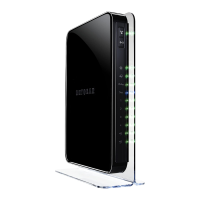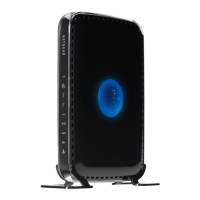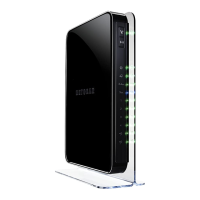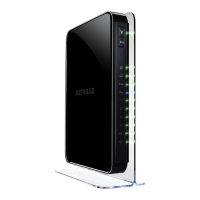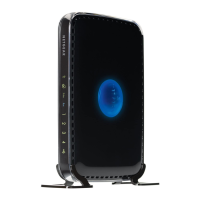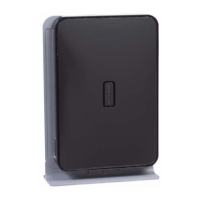Advanced Configuration
101
ProSafe Dual Band Wireless-N Access Point WNDAP360
g. Click Apply to save your security profile settings. The Bridging screen displays
again.
h. Rep
eat step d through step g for any other security profile that you want to edit.
For example, first configure security profile NETGEAR-WDS-1 with the
MAC address
of AP1, and then configure security profile NETGEAR-WDS-2 with the MAC address
of AP3 (see Figure 59 on p
age 98).
Network Authentication
and
Data Encryption
(continued)
Open System Although you can use the bridge communication without any
authentication and encryption, NETGEAR recommends that
you use WEP if you do select an open system. From the
Data Encryption drop-down list, select one of the following:
• None. No authen
tication and encryption.
• 64-bit WEP. Standard WEP encryption, using 40/64-bit
encryption.
• 128-b
it WEP. Standard WEP encryption, using 104/128-bit
encryption.
• 15
2-bit WEP. Proprietary WEP encryption mode, using
128+24 bits encryption. This mode functions only with
other wireless station that support this mode.
WPA-PSK TKIP (T
emporal Key Integrity Protocol) is the standard
encryption method used with WPA-PSK and the only
selection possible from the Data Encryption drop-down list.
In the WPA Passphrase (Netw
ork Key) field, enter a
passphrase. The passphrase length needs to be between
8 and 63 characters (inclusive).
WPA2-PSK AES (Advance
d Encryption Standard) is the standard
encryption method used with WPA2-PSK and the only
selection possible from the Data Encryption drop-down list.
In the WPA Passphrase (Netw
ork Key) field, enter a
passphrase. The passphrase length needs to be between
8 and 63 characters (inclusive).
Note: NETGEAR recommends WPA2-PSK authentication
wi
th AES encryption if you want to use the 11n rates and
speed.
Link Test
IP Address To verify the connection between the access point
and the wireless station
that you intend to build a bridge with, enter the IP address of the wireless
station, and then click Link Test. The Link Test Process Status field displays
the results of the test (Uninitialized, In Process, Success, Timed Out, or
Failure).
Note: You should be able to ping the IP address of both APs from a
co
nnected client. Failure to ping one of the APs means that the wireless signal
is not traversing the bridge. Failure to ping both IP addresses means that the
clients is not connected correctly.
Table 28. Wireless Signal Repeating Profile and Authentication Settings (Continued)
Field Description

